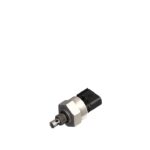After making substantial progress toward its 2030 sustainability goals, TE Connectivity has strengthened its commitment to reduce the company’s environmental impact. As detailed today in TE’s annual corporate responsibility report, Connecting our World, the company has raised its goal to reduce Scope 1 and Scope 2 emissions, those directly generated by TE, by 70% by […]
TE Connectivity
OFC 2023 round-up
The Optical Fiber Communications Conference (OFC) returned once again to provide a crucial platform for companies of the industry from around the globe. Taken place this past week, March 5th to 9th in San Diego, the annual exhibition and conference presented up-to-date techniques, materials, technologies, and applications in fiber optic technology. Below you will find…
How a connector company made sustainability a priority
In this podcast, EE World spoke with Ralf Klädtke to learn how TE Connectivity trains its engineers to look for sustainable materials and manufacturing processes.
What makes a cobot unique from a robot?
Unlike robots whose roots trace back to 1962 or even sooner, collaborative robots or cobots trace their roots to 1996 – over 34 years later. While the robot is an autonomous machine that functions without human control, a cobot employs artificial intelligent (AI) to perform tasks in collaboration with human workers. Major sensor technologies used […]
What sensors are used in today’s and tomorrow’s HVAC systems? Part 3
Part 1 provided background on the evolution of heating, ventilation and air-conditioning (HVAC) systems and the increased use of sensors and Part 2 elaborated on sensing in more advanced HVAC systems. In this third and final part, government and industry organization’s effort to change HVAC systems and the impact on sensing will be explored. In […]
What sensors are used in today’s and tomorrow’s HVAC systems? Part 2
Part 1 provided background on the evolution of heating, ventilation and air-conditioning (HVAC) systems and the increased use of sensors in these systems. Today, sensors are used both to monitor the indoor environment as well as to monitor and control the equipment that is used to cool or heat, humidify or dehumidify as well as […]
What sensors are used in today’s and tomorrow’s HVAC systems? Part 1
When Willis Carrier designed a system of fans, ducts and perforated pipes, which became the first modern electric air conditioner (AC) in 1902 (120 years ago), sensing was not part of the bill of materials. Devon Brock, Manager of Product Knowledge and Training, Sensors Group at TE Connectivity provides some insight into subsequent AC systems. […]
NanoRF optical modules offer more speed and functionality in small form factor
TE Connectivity (TE) is introducing its NanoRF optical hybrid modules for the defense industries VPX-based embedded computing systems that require increased bandwidth and radio frequency (RF) signaling. The new hybrid modules feature high-density RF and optical connections within common connector module applications like radar, electronic warfare (EW) missile guidance and tactical communications, along with any […]
How has sensing in industrial automation changed? (Part 3)
In Industry 4.0, another sensor-specific aspect that customers are asking for is packaging that can survive in different harsh factory environments. “When you’re putting them on an oil platform or in a factory or on a motor or in a steel mill or in a paper mill, in those really harsh environments, they need to […]
How has sensing in industrial automation changed? (Part 2)
Sensing has changed a lot since the early days of industrial automation. “Back 250 years ago, your sensors were actually people. They were your manufacturing engineers that would walk around and listen to the machines and hear what’s going on,” says John Tuley, from IoT Business Development -Sensor Solutions at TE Connectivity. In Industry 4.0, […]










